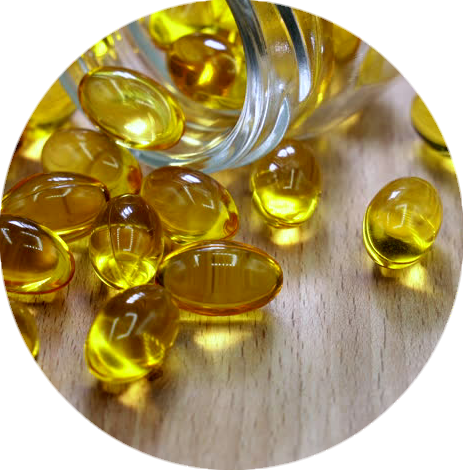Fish Meal / Fish Oil

Fish meal is a commercial product mostly made from fish that are not used for human consumption; fishmeal is generally used to feed farm animals in agricultural setting. Because it is calorically dense and cheap to produce, fishmeal has played a critical role in the growth of factory farms and the number of farm animals it is possible to breed and feed.

Fish oil can be obtained by eating fish or taking supplements. Fish that are especially rich in the beneficial oils known as omega-3 fatty acids include mackerel, herring, tuna, salmon, cod liver, whale blubber, and seal blubber. Two of the most important omega-3 fatty acids contained in fish oil are eicosapentaenoic acid and docosahexaenoic acid.


Description
Fish meal is a commercial product mostly made from fish that are not used for human consumption;
fishmeal is generally used to feed farm animals in agricultural setting. Because it is
calorically dense and cheap to produce, fishmeal has played a critical role in the growth of
factory farms and the number of farm animals it is possible to breed and feed.
Uses:
Prior to 1910, fish meal was primarily used as fertilizer, at least in the UK.
Fish meal is primarily used as a protein supplement in compound feed. As of 2010, about
56% of fish meal was used to feed farmed fish, about 20% was used in pig feed, about 12% in
poultry feed, and about 12% in other uses, which included fertilizer.
The cost of 65% protein fishmeal has varied between around $385 to $554 per ton since 2000,
which is about two to three times the price of soybean meal.
The rising demand for fish, as people in the developed world turn away from red meat and toward
other sources of meat protein, has increased demand for farmed fish, with farmed fish accounting
for half the fish consumed worldwide as of 2016. Demand for fish meal has increased
accordingly, but harvests are regulated and supply cannot expand. This has led to a trend
towards use of other ingredients such as soybean meal, cottonseed meal, leftovers from
processing from corn and wheat, legumes, and algae, and an increase in research to find
alternatives to fish meal and alternate strategic uses (for instance, in the growth phase, after
newborn fish are established).
Properties:
Good quality fish meals contain crude protein levels above 66%, fat content around 8 to 11%, and
ash generally below 12%. In some of the tropical developing countries, “fish meal” is sometimes
produced after sun-drying and grinding, and can have very high levels of ash and relatively low
protein levels.


Description
Fish oil can be obtained by eating fish or taking supplements. Fish that are especially rich in
the beneficial oils known as omega-3 fatty acids include mackerel, herring, tuna, salmon, cod
liver, whale blubber, and seal blubber. Two of the most important omega-3 fatty acids contained
in fish oil are eicosapentaenoic acid (EPA) and docosahexaenoic acid (DHA).
Uses:
Often marketed and sold for consumption as part of the diet or in dietary supplements in
contemporary societies, fish oils also have found roles in external use, as emollients or as
general ointments as well as in body art, or for alleged insulation against cold
temperatures.
Properties:
Lower blood pressure.
Reduce triglycerides.
Slow the development of plaque in the arteries.
Reduce the chance of abnormal heart rhythm.
Reduce the likelihood of heart attack and stroke.
Lessen the chance of sudden cardiac death in people with heart disease.